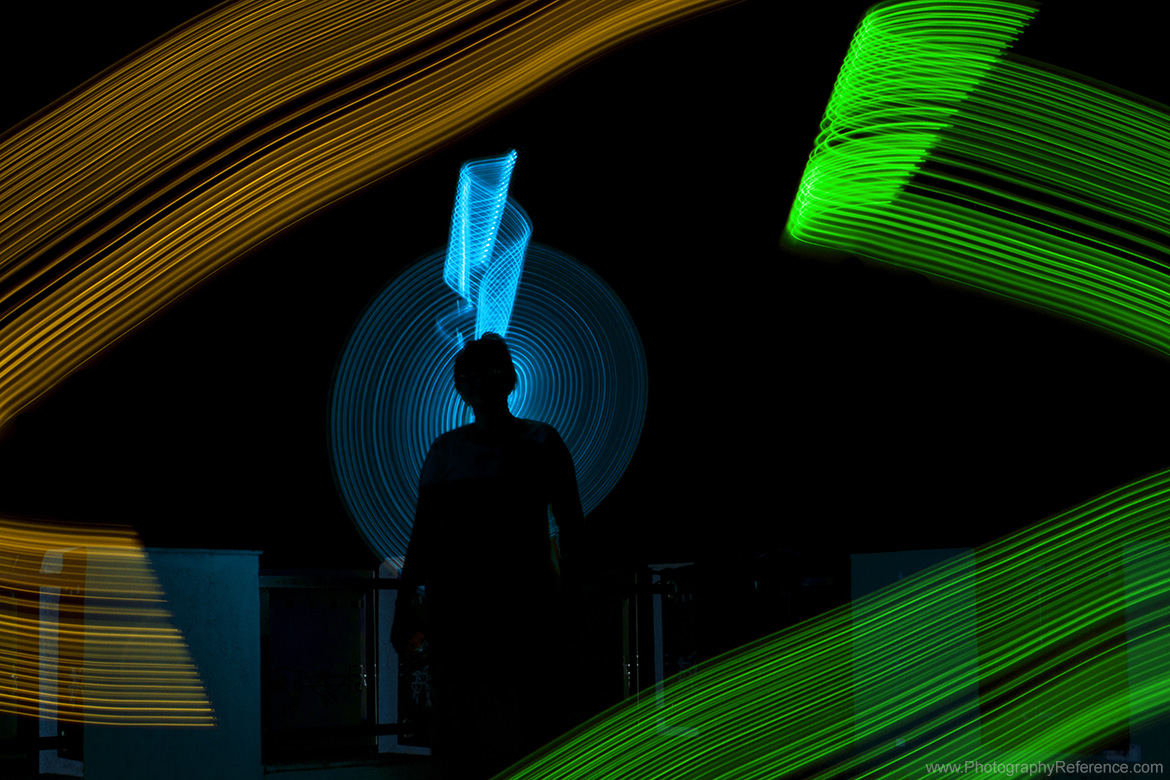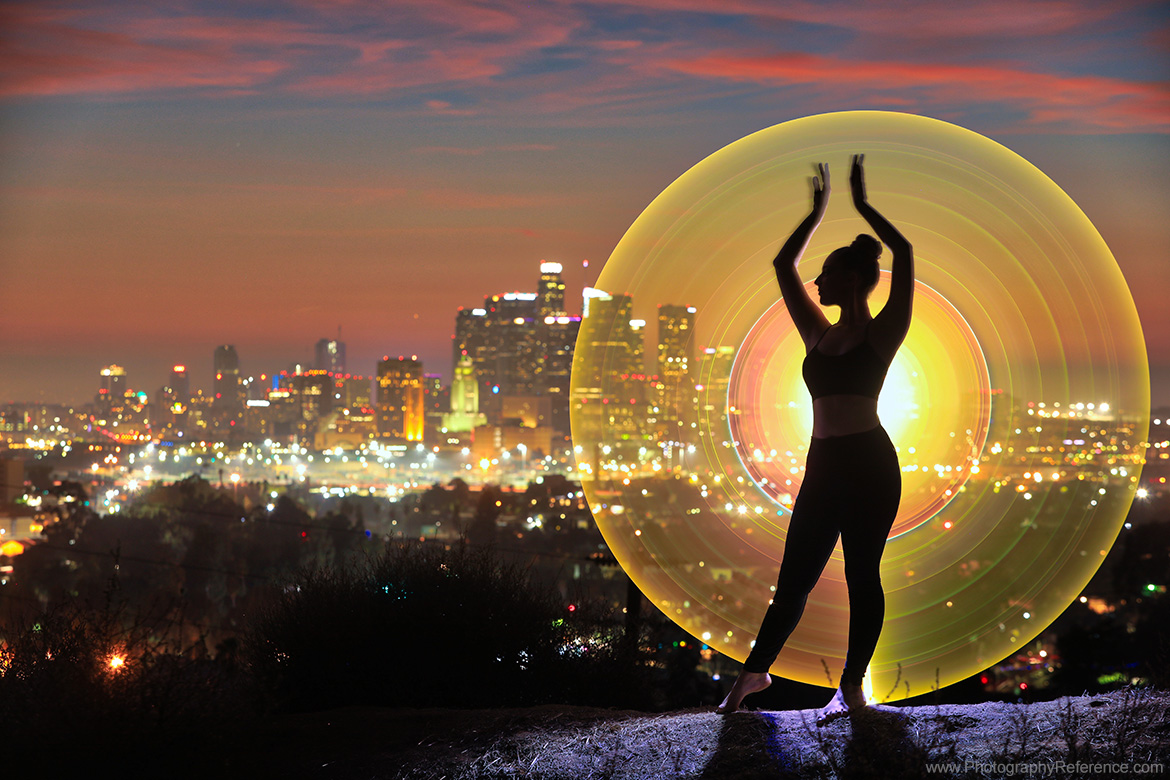Photography’s light painting sub-genre has been gaining popularity for a while. It was formerly a reserve for a handful of night-time photographers, but it is now a type of creative photography style that can be aesthetically stunning. Your imagination is the only constraint! There are, however, certain technicalities as well. You will require the appropriate tools, time, and darkness!
Light painting photography can be deemed both a genre and a technique. In this article, we aim to provide you with as much vital information regarding light painting photography that will help you create the perfect scene.
We earn commissions if you shop through the links below. Additionally, as an Amazon Associate I earn from qualifying purchases. Please read the full Affiliate Disclosure.
What is light painting photography?
Photographers use long exposure techniques to produce distinctive effects that are impossible to achieve with regular or fast shutter speeds. Light painting is the process of modifying an image while capturing a long exposure photograph with the help of a moving light source.
This light source can be a smartphone, a flashlight, a glow stick, LED light bar, LED brush and even fire. Objects in the scene are highlighted using the source of light and creative effects are basically drawn onto the scene with the light.
Light painting images are made for social media
Upload your greatest light painting images to your website and to your social media accounts such as TikTok, Facebook and Instagram.
Setting up the camera for light painting photography
Knowing the exposure time and camera’s settings isn’t enough to produce the photo you want; you will also need to plan and practice. Look at ambient light that already falls over the scene and understand how the light will influence the photograph.
Light painting photography is easily completed in completely dark interior spaces, but careful planning is necessary in order to take advantage of the outdoors and the natural environment.
The first step is to choose the composition location and set up the camera on a tripod or other stable surface.
Put the camera into manual mode. Depending on the ambient light and the desired effect, try starting with an ISO setting of 100, a small aperture of f11 to f22, and a shutter speed of between 10 and 30 seconds.
The camera will unlikely focus on the subject in low light if it set to auto-focus, so switch to manual and use a torch or other light source to check and set the focus.
Attached the shutter release or set the timer for long enough for you to begin painting with light. A timer of between 2 and 10 seconds may suffice.
Pick a dark location
Choose a place that is as dark as you can. This will enhance the light painting’s effect. It can entail going to the forest or a beach.
Wear non-reflective and dark clothing
You should wear dark clothes if you are going to be the one moving whilst holding the light when the camera is rolling. You may appear in the image, but if you are cautious and do not wear bright clothes, it will be less likely that you will appear in the image. Unless that is the effect you are aiming for.
Always experiment
Before setting out to shoot on location or experiment, it is always a good idea to attempt different set-ups before you photograph the final shot. Adjust the brightness of the scene and adjust camera settings until you find the ones that are apt for you.
Capture moving vehicles
The most straightforward technique to record streaks and light trails is to photograph a moving vehicle. Place the tripod on the side of the road, atop a bridge or at some other location where vehicle movement can be observed. Something to remember when photographing long exposure light trails whilst set up on a bridge or other walk-way type structure: If you are set up on a bridge that has traffic or pedestrians on it, there will likely be very subtle movement and vibrations in the structure. This can cause a blur in the long exposure.
Capture outside light from within a moving vehicle
When attempting light painting photography, as a passenger within a moving vehicle, try holding the camera steadily as the car travels with the shutter open. Although there will be some camera movement, it can enhance the effect of light movement. A tripod made expressly to attach to or fit inside a car is another option.
Modify exposure times when light painting photography
Exposing for ten seconds or more is usually required for more complex patterns but try at least 20 seconds if you intend to light paint with various light painting methods in the same picture.
Camera
Any digital camera with manual settings of up to 30 seconds exposure or more, especially a camera that has bulb mode. Bulb mode will allow for shutter speeds much longer than 30 seconds.
Tripod
The camera must not move while taking light painting images because your shutter will remain open for several minutes, so a sturdy tripod is vital.
Shutter release
Another important piece of equipment is a shutter release. The ideal release is one that connects wirelessly to the camera. A hard-wired release will also be effective. If neither is available, photos can still be taken using the camera’s self-timer feature.
Stopwatch
A stopwatch is useful to keep track of the length of time of the exposure when using bulb mode.
Light source
Light painting can be created with various lights. These lights act as brushes that are used to create the desired lighting effect in the composition.
Colour gels
These are a great way to add colour to the composition.
Final words on light painting photography
Enter the world of light painting and discover the abundant ways it offers to express yourself. You will need to experiment regardless of where you begin your light painting journey. Try something out anyway, practice different compositions and scenes, and get that incredible photograph.

Have fun with light painting photography!
Paint your imagination with light using light painting photography.
